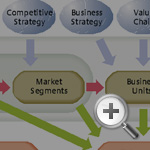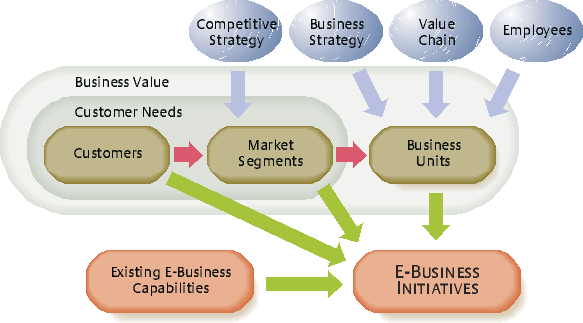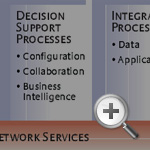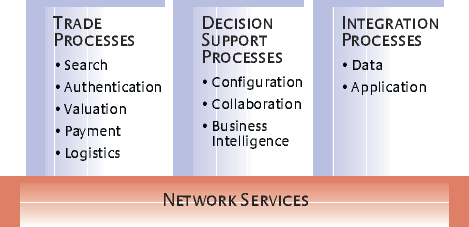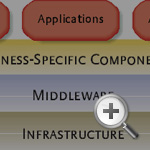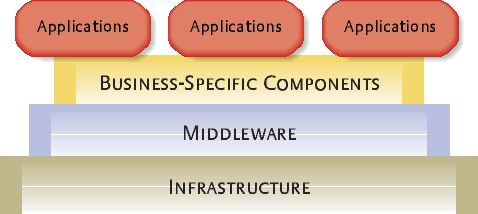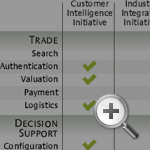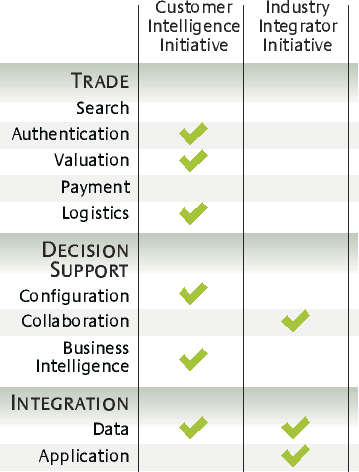How to Plan E-Business Initiatives in Established Companies
Many large and mature firms — which still form most of the economy — have difficulty analyzing the opportunities and difficulties created by the Internet. Here is a planning process, validated at several established companies, that puts e-business into perspective and helps make it manageable.
Topics
Over the past decade, Internet and Web technologies have remade the business world. E-business has dramatically changed how companies’ business processes are implemented and enhanced, altered industry structures, and shifted the balance of power between corporations and their suppliers and customers (both downstream partners and consumers).
Companies in every industry have had to evaluate the opportunities and threats presented by e-business. Although many “pure-play” or “born-on-the-Web” organizations have come into being, the economy still consists mostly of companies that were created well before the advent of e-business. For large and mature corporations, responding to these trends has been difficult. Even so, most e-business research has focused on new companies. From our academic research and work with various established, global corporations, we have developed a planning process that puts e-business into perspective and helps make it manageable. (See “About the Research.”)
The E-Business Planning Process
Four major steps make up the planning phase for new e-business projects using existing products and services, processes and markets: (1) Identify potential e-business initiatives, (2) Analyze the functional scope of e-business initiatives, (3) Analyze the sustainability of benefits from e-business initiatives and (4) Prioritize e-business initiatives.
In addition to the planning phase, the e-business development process also includes phases for feasibility analysis, implementation, testing, deployment and performance review. The overall process can be set within a development life cycle spanning all these phases. In this article, we focus on the four planning steps, since the later phases are well supported by established methods for information system development.1
Identify Potential E-Business Initiatives
Companies can gain two fundamental types of benefits from e-business: first, value creation or value enhancement for one or more of a company’s stakeholder groups; and second, lower costs of providing goods and services to the marketplace.
Adding value through e-business.
Customers are a driving force for value creation.(See “The Contexts of E-Business Initiatives.”) Managers can use customer needs to identify opportunities for leveraging e-business to enhance the company’s customer value proposition and to help define specific market segments with distinct priorities. Furthermore, the concerns of distinct functional groups within customer segments may drive different e-business initiatives. For instance, while research and development scientists within a downstream business-to-business customer may value solutions for product development, the customer’s production workers may seek know-how for using the company’s products in making their own products, while the customer’s supply personnel may care primarily about efficient, flexible and responsive order fulfillment and logistics.
To create customer value, corporations should focus on the needs of individual customers as well as market segments and target industries, not on product- or commodity-based priorities of the internal organization. The customer needs of companies such as Dell Inc. or Hewlett-Packard Co. tend to be determined by specific industry verticals; e-business initiatives serving the defense sector will be quite different from those aimed at the education sector. Furthermore, within each customer segment, corporations should adopt a process perspective in supporting the needs of different decision makers. For instance, a customer’s R&D group may benefit from information that spans the supplier company’s R&D, production and marketing groups — information that can be integrated via e-business mechanisms (rather than traditional functionally defined information sources). A case in point is a chemical company that provides a cosmetics maker’s R&D personnel with information on the packaging options for chemical supplies.
Value creation from e-business can be expanded by considering the needs of other stakeholders besides customers. Key components of a company’s value chain, including suppliers, distributors and shipping partners, also influence the value proposition of e-business initiatives. Companies’ internal structures tend to be well aligned with their interactions with these stakeholders. The operating units of a computer company may be organized according to product lines such as workstations, servers, printers and imaging and storage devices, each with their own supply chains and partner relationships. Creative e-business innovations can lead companies to improve existing value chain interactions and possibly even to reconfigure the value chain. For example, a major convenience store chain has introduced a Web-based system that allows its stores to factor in demand trends and place online orders for beverages, rather than relying on fixed orders or having delivery trucks deal with fluctuating demand. And large retailers such as Carrefour SA and Kroger Co. have used online marketplaces not only to restructure their supply chains, but also to change their relationships with suppliers and competitors that use the same marketplaces.
A challenge that any company faces in reshaping established customer-facing processes is their effect on channel partners. Many managers fear that e-business will cannibalize existing channels. A smarter approach, however, is to evaluate e-business initiatives holistically, to extract their value contributions to customers and channel partners. This is key to making e-business a “yes and” complement to existing business relationships and processes rather than a “yes but” proposition.
E-business projects can also create value for internal stakeholders such as employees. E-business can foster knowledge creation and collaboration via dynamic organizational communities. An example is an online forum for improving a corporation’s environmental impact through innovative production and office processes. Through this forum, global teams can collaborate on environmental projects based on common interests and disband once targets are hit.
Cost efficiencies through e-business.
As with value creation, cost savings through e-business can be analyzed using the framework in “The Contexts of E-Business Initiatives.” Yet the cost perspective is more “inside out” than “outside in.” That is, opportunities for savings are more readily identified for internal business processes and functions, because cost reductions are an area in which the interests of the company may differ from those of its external stakeholders. An important consideration is the potential effect of cost reductions on the value proposition of key stakeholders, such as customers, suppliers, business partners, shareholders and employees. An e-business effort to enable customer self-service would save money, but it would be inadvisable for key customers with high service expectations. However, customer self-service could be a very effective method for engaging new and smaller customers over a larger geographical range — customers who might otherwise be inaccessible. (This example also demonstrates how cost-saving initiatives sometimes can be combined with value-adding features to make them more attractive.)
Whether the benefits of e-business lie in value creation or cost savings, the e-business planning process should be part of a corporation’s strategic planning process, not a separate effort. Projects with a customer focus should be based on the relevant competitive strategy (such as cost leadership or differentiation), while value chain initiatives should be based on the strategy of the relevant business unit(s) with respect to business processes such as sourcing, technology/product development and staffing.
Analyze the Functional Scope of E-Business Initiatives
We developed a typology that can be used to plan the functional scope of each e-business proposal for any corporation.(See “An Architecture of E-Business Processes.”) Functional scope is the set of business processes a company can support for a particular e-business initiative.
Network services.
At a company’s underlying network layer are services and capabilities that form the basis for e-business. These include basic communication services and infrastructure components such as security and reliability. At this level, the opportunities for improvement mostly lie in efficiency and reliability rather than a quest for sustainable competitive differentiation. However, an efficient and effective network infrastructure is often necessary to realize business value through e-business initiatives in three types of processes: trade, decision support and integration processes.
Trade processes.
These processes support buying and selling online. They can both add value and save costs for business transactions. Specific trade processes include:
- Searching for products, buyers and sellers
- Authentication of products, buyers and sellers
- Valuation of products
- Payment and payment clearance
- Logistics such as delivery and installation
Decision support processes.
These processes enable a company to obtain information and use analytical models that enhance its ability to make effective business decisions. Decision support processes also allow a corporation to interact with other businesses in ways that help all of them make better decisions. Specific decision support processes are:
- Configuration via configurator tools, electronic requirement determination tools and sharable computer-aided design tools
- Collaboration with tools such as conferencing, white boarding, electronic brainstorming and shared data repositories
- Business intelligence, conducted with analytical tools
Integration processes.
These processes help corporations integrate their information systems to enable automation of tasks across different component information systems. This includes vertical integration between a company and its suppliers or customers/distributors, and horizontal integration between a business and horizontal partners (for example, by creating integrated catalogs of products or consolidated procurement systems). Specific integration processes include:
- Data integration, allowing a company’s software applications to access its partners’ databases, possibly across heterogeneous and autonomous database structures, software and hardware platforms.
- Application integration, involving integration of both data and applications (order, payment, accounting, inventory and work flow systems) through the use of technologies like object-oriented systems and eXtensible Markup Language (mechanisms often described as “Web services”). The role of application integration increases when corporations adopt computer-based systems for internal integration, such as enterprise resource planning systems.
When managers have categorized e-business initiatives according to their functional scope, they can qualitatively identify the potential business value and cost savings. Yet it is not always feasible to quantify e-business efforts — or attain the ideal of monetizing them. Thus, the e-business evaluation process needs to be flexible and adaptive, and not necessarily limited by criteria such as return on investment.
Analyze the Sustainability of Benefits from E-Business Initiatives
E-business typically involves the use of software and systems that allow external parties, including competitors, to gain insight into a company’s operations. Thus, innovations involving e-business interactions can be easily emulated and even improved upon by competitors, often at lower cost. This “curse of the bleeding edge” is possible with any innovation but is particularly onerous in the e-business context. For that reason, it is important to assess the sustainability of any competitive advantage that might be derived from an e-business project. For the most part, sustainability is derived from two key factors:2
- Barriers to entry and imitation, including legal restrictions, superior access to inputs or customers, market size and scale economies, and intangible barriers such as historical circumstance.
- Early mover advantages, due to learning costs, network externalities, established reputation and buyer uncertainty, and partner switching costs.
We look for six features of e-business initiatives to assess their sustainability:
- Positive network externalities. Sustainability is enhanced if an initiative’s features become more valuable as the number of participants grows. In that case, the size of the newly formed network creates switching costs for users. Being the “first mover” can be significant in building a positive network effect, as seen, for example, in Yahoo Japan Corp.’s auction market leadership over eBay Inc. in Japan. Yahoo Japan’s online presence as Japan’s prime Internet access provider and electronic commerce portal greatly reinforced its auction position, in contrast to eBay’s dominance in many other markets.
- Proprietary database. Companies can protect proprietary customer data in e-business initiatives much more effectively than software functionality. In fact, companies are often required by law to protect personal data. Also, customers resist sharing personal and private data with multiple companies, particularly if they are satisfied with their current providers. The corporation that first attracts a customer and extracts personal data has in effect created switching costs. When this data asset is enhanced by positive network externalities, “stickiness,” and thus sustainability, results. For example, Amazon.com Inc.’s recommendation system uses customer profiles and data on online behavior to suggest products. The more a person (and others) uses the recommendation system, the more accurate it becomes, and the greater is the perceived switching cost.
- Proprietary knowledge base. If an e-business initiative also exploits proprietary intellectual assets, then competitors have a harder time emulating it as long as the knowledge is protected. An example is the online matchmaking service eHarmony.com Inc., which boasts a “patented Compatibility Matching System” based on surveys completed by subscribers. The system leverages eHarmony’s proprietary profile-matching algorithms.
- Proprietary hardware and/or software. It is possible in some specialized contexts for companies to exploit domain expertise that is embedded in particular hardware or software. This expertise can be protected even if the software has a public user interface. For example, computer companies such as IBM Corp. and Hewlett-Packard allow clients to use the Web to access their leading-edge hardware products to test software applications.
- Personalization. An e-business initiative can be made sustainable if it exploits personal information to provide personalized service. For example, while several logistics companies allow customers to track shipments online, FedEx Corp.’s InSight is a Web-based business tool that proactively tracks customer shipments, sends automatic notifications of critical shipping events, offers precise shipment status summaries based on address and/ or account number (instead of tracking numbers) and recommends actions to expedite delivery.
- Exclusive partnerships. If a project involves exclusive partnerships among multiple businesses, forged through a combination of mutual value and contractual obligation, then users would incur switching costs by moving to another provider and having to reestablish several relationships. Similarly, potential competitors would face increased entry barriers. An example is Tradcom NV, a Belgian company that was founded by four complementary suppliers, each the market leader in a specific maintenance, repair and operating segment in Europe. This joint venture offers integrated transaction functionality to industrial buyers of more than a million products.
Prioritize E-Business Initiatives
Since several e-business proposals may well be under consideration at the same time, perhaps by different groups or units within the same organization, executives must be able to choose among them. Traditional cost-benefit analysis can be applied to e-business initiatives and combined with a portfolio planning approach for prioritizing and scheduling projects. In the e-business context, however, it is particularly important to consider the scope of each project and its interdependence with other activities within the corporation. Such interactions can be examined through the lens of information technology architecture. (See “A Layered IT Architecture.”) 3
E-business initiatives often involve components from several layers of the IT architecture. For example, a company that wants to provide its distributors with production schedule details of products may have to consider infrastructural enhancements in the security of its Web traffic, integration with the manufacturing database and access to a production planning application. The collective value of this proposal will depend on existing components, and the incremental benefits may be hard to separate.
Each level of IT architecture depends on elements at lower levels. An application layer proposal could hold great promise, but it might not be feasible without first implementing middle-ware and infrastructure components. As a result, an infrastructure project such as digital certification for online security may take precedence over an e-commerce initiative. Similarly, a manager considering an application that includes middleware enhancements (such as a new database management system) needs to factor in other applications that could potentially benefit from that middleware. Another possibility is that two projects involving common infrastructure or middleware enhancements may not be very attractive individually, but if both are pursued, the synergies may more than justify their selection.
Exploring New Business Opportunities
Managers can apply the e-business planning process to a company’s existing products and customers. However, e-business can also create opportunities for completely new products and markets.
Adding Information Features
E-business can enhance products and services with informational capabilities that increase their effectiveness and value. For example, some chemical companies place Web-enabled sensors in product containers located at customer sites so that they can monitor and replenish product levels, minimizing or even eliminating customer wait times. Similarly, appliances such as refrigeration and security systems can include tiny Web servers that can monitor device status for remote monitoring and updates by service organizations and even customers.4
Selling Information As a Product
E-business results in information being captured, stored and organized electronically, which can be the basis for new business opportunities. Some of the information may itself have market value, as additional products that a company can sell. For instance, manufacturers have to maintain material safety data sheets on all substances used in their products, and materials suppliers must provide MSDS information when they sell their products. MSDS Materials Safety Data Sheet Solutions Inc. of Montreal organizes the information and sells it as a service. Another example is the financial analysis data traditionally used by investment managers to make investment decisions. Companies such as Morningstar Inc. of Chicago use online channels to offer such information to self-directed investors or to people who want the ability to validate the recommendations of their investment advisers.
Selling Knowledge As a Product
Another source of opportunity for new business arises from leveraging a company’s existing business knowledge and expertise for novel products or services. Apparel maker Fruit of the Loom, based in Bowling Green, Kentucky, had developed expertise in setting up e-commerce Web sites for small mom and pop retailers such as independent apparel shops and T-shirt shops that lacked the expertise to develop e-commerce systems but formed a significant portion of the company’s downstream partners. By developing the Web sites and linking them to its production and distribution systems, Fruit of the Loom helped not only its customers but also its own internal processes. The expertise that the company gained in dealing with this type of value chain has enabled it to market these services to other companies in the garment industry through its FTL Systems Inc. subsidiary. Another example is AMR Corp.’s American Airlines, which leveraged its expertise in yield management to spawn a new business, which it spun off as Sabre Holdings Corp.
Finding New Markets
E-business can be used to extend existing product and service lines to new customers, such as people who have never physically visited a company but become aware of it through Web searches. In this regard, it is important to distinguish between those who are already aware of the company and its offerings, even though they are not yet customers, and those who are unaware of the company. The latter group has to be reached using means that go beyond a corporate Web site. A company could set up an online community site focusing on a particular type of product or service, through which it can make visitors aware of its activities. To be viable, the site probably would have to include information about competing, complementary and related products.
In identifying and reaching new markets with e-business, companies can also exploit the so-called long tail.5 This term refers to the potentially large number of entities that might be attracted to a company’s products and services, but are not serviceable at profitable levels in a traditional business environment. An example is the small and midsize enterprise market that historically has not been able to afford enterprise resource planning products. But because e-business can significantly lower the costs of reaching and serving customers, ERP vendors such as SAP Aktiengesellschaft of Germany and Oracle Corp. of California have been able to enter the SME market in recent years, offering their software to formerly marginal customers through an online application service provider.
Applying the E-Business Planning Process
We utilized the e-business planning process at a large, mature company. (The following discussion focuses on the first three steps in the e-business planning process because the later steps, such as prioritization, feasibility analysis and implementation, involve proprietary competitive information.) PaKCo (not its real name) is a global provider of equipment, software and services to the packaging industry. PaKCo organizes its sales efforts around regional sales and service units, agents and value-added resellers for customers across the packaging supply chain. Service is delivered on-site by consultants, field service engineers, trainers and dedicated specialists. Certified company training centers and distributors also offer service support. The company uses local or on-site training seminars to provide software upgrade support. In sum, PaKCo is a highly developed organization with well-established, traditional business processes that have worked very well for many years.
The company maintains a relatively standard and robust IT infrastructure, including a customer relationship management system for lead and quote generation, ERP systems for finance and budgeting, sales and service support systems and a data warehouse. PaKCo’s Web site attracts more than a thousand professional visitors a day, and the company also operates an intranet for employees and an extranet for agents and resellers. The ex-tranet provides product information and limited transactional capabilities to registered clients. The company also uses Web conferencing technology for demonstrations, customer training sessions and service support.
The Internet is already a powerful and effective channel for PaKCo’s business. However, the need to integrate e-business with existing processes and the company’s strategic plans motivated a review of e-business initiatives in 2006. PaKCo appointed an e-business manager to lead the assessment and setup across functional task force headed by the vice president of global sales. Along with consultants from a leading business school, the task force conducted several workshops based on the e-business planning process described in this article. Workshop participants identified and analyzed promising e-business initiatives, with a focus on customer needs. The highest-rated initiatives were subsequently presented to the CEO, with a recommendation that they be implemented as pilot projects. Below, we show how the e-business planning process was used for two important initiatives at PaKCo.
Industry Integrator Initiative (I3)
Step 1: Identify the initiative.
While PaKCo routinely offered specialized equipment, software and services to various customer segments such as designers, trade shops and converters, an opportunity for specialized solutions had emerged for an increasingly important customer group: consumer product companies and large private label retailers. Because these companies interacted with many other players in designing, developing and producing their packaging, they would value a standardized, consolidated interface connecting them with all suppliers, from idea to box. This standard interface would give consumer product companies and retailers much more control over the entire packaging process, reduce their time to market, and protect their brand equity and intellectual property. This was the basis of PaKCo’s I3 project. PaKCo’s goal was to become the industry integrator managing this interface.
I3 fit PaKCo’s competitive strategy of industry leadership and differentiation. PaKCo’s solid reputation, large market share, broad product portfolio and highly specialized work force were key assets for achieving the pivotal role of industry integrator. PaKCo already had a work flow and project management system in place that could be enhanced through the initiative. The advantages of the project for consumer product companies and private labels were many. I3 would save them time and significant money by giving them a single entity to deal with — PaKCo as industry integrator — rather than multiple entities across the supply chain. In addition, these brand-sensitive clients could brand the industry integrator Web site with their own set of qualified and preferred packaging suppliers, with PaKCo operating behind the scenes.
Step 2: Analyze the functional scope.
To evaluate which resources and skills were needed for I3, the e-business task force conducted a functional scope analysis. (See “Functional Scope Analyses for Two E-Business Projects.”) The main requirement was the external integration of PaKCo’s information systems with those of its customers and their packaging suppliers. PaKCo’s existing work flow infrastructure would need to be upgraded to enable online data and application integration for design, work flow automation, project management and production management applications. In addition, the company needed better interactive communication tools to collaborate closely with clients and qualified and preferred suppliers. Trade and decision support processes were not considered crucial, with the exception of collaboration support for the different companies interacting through the integrated system.
Step 3: Analyze the sustainability of benefits.
The proprietary hardware and software at the core of I3 would give PaKCo a competitive edge. The online interface could be protected from easy emulation by virtue of the packaging domain expertise embedded in the company’s professional work flow system. The integration of the system would be key; because of PaKCo’s focus on the complete work flow rather than individual work flow components, this “central nervous system” could closely link all elements of the packaging chain for enhanced control, efficiency and speed in a way that could not easily be copied by competitors.
Another aspect creating sustainability would be the positive network effects resulting from customers “on-boarding” their packaging suppliers. As consumer product companies and large retailers introduced their respective supply bases to the network, the new entities could widen the Web site’s user base by attracting additional companies. Being the first mover in integrating the industry would boost PaKCo’s chances of creating positive network effects. Furthermore, once a critical mass of participants were established, I3’s functional scope could be extended to include business intelligence, through which PaKCo could advise customers on industry best practices and trends. A business intelligence function could in turn lead to the development of a proprietary knowledge base, which could strengthen the company’s consulting arm.
Customer Intelligence Initiative (CI2)
Step 1: Identify the initiative.
While PaKCo relied heavily on key account managers and sales representatives to sell big-ticket items offline, e-business held the potential for sales of less expensive offerings, such as add-ons, plug-ins and training sessions over the Internet, to customers across various segments. The CI2 project investigated the transformation of PaKCo’s customer transaction process for more efficient and effective selling. The crux of this initiative was business intelligence about customers, which would enable PaKCo to sell customized offerings for each customer. By aggregating system configuration data from customers, CI2 would allow the mining of patterns of system deployment to drive additional consultancy sales. Customers could potentially be benchmarked against “standard” configurations for specific applications and alerted if their efficiency and productivity could be improved. Ultimately, PaKCo might be able to offer customers analytical tools to benchmark their configurations in a visual manner against best-in-segment performance.
CI2 would leverage a promising software tool for system diagnosis and control that was initiated by PaKCo’s R&D group (and already offered to customers as part of the company’s premier service program). This tool enabled customers to monitor and manage their systems easily, and it made it possible for PaKCo personnel to support installation, updates and service remotely. CI2 would extend the potential of the software tool by exploiting data collected on the customer’s system configuration and generating extra sales. What’s more, CI2 could be used to search for new customers by matching existing customer profile data with data on prospective customers.
Step 2: Analyze the functional scope.
The task force identified support requirements for specific trade, decision support and integration processes. (Again, see “Functional Scope Analyses for Two E-Business Projects.”) The trade processes for CI2 included authentication (to ensure the authenticity of the customer), valuation (for online price discovery) and logistics (for digital downloads for software and service). Support for search and payment was not considered necessary because the initiative dealt with existing customers with established payment processes. Among decision support features, configuration and business intelligence resources were needed. PaKCo offerings could be configured to address specific customer needs, based on data collected through CI2 and possibly enriched with company proprietary knowledge and/or aggregated customer segment intelligence. Finally, online data integration would be needed to collect configuration data from customers. To offer a personalized interface to the customer, PaKCo would have to set up a portal connecting the customer’s extranet and the remote service tool. The portal would support application integration for personalization purposes.
Step 3: Analyze the sustainability of benefits.
From the start, the system configuration data provided by customers would create switching costs. Because the initiative would involve proprietary data advising customers on how to improve their packaging operations, this data asset would protect CI2 from competitor emulation. Additional switching costs could be created by augmenting the data asset with positive network externalities and personalization. With an increasing number of customers sharing their configuration data, the initiative would become more and more attractive to customers as they received ever more valuable recommendations, based on aggregated data benchmarks. PaKCo already held the largest market share, which added to the appeal of its recommendations. The positive network externalities created by this market leadership would allow PaKCo to refine the level of granularity of its customer intelligence model, which could generate more opportunities for consulting. Finally, PaKCo’s highly personalized service and recommendations — made possible by customer profiles, system configurations and needs — would motivate customers not only to stay with the company but also to increase their purchases.
PaKCo followed up on the e-business task force’s analysis with an executive review of the proposals, and a steering committee of five senior managers was appointed. Of the two examples described here, CI2 received a thumbs-up from the CEO, while I3 was classified as attractive but not an immediate priority.
THE BENEFITS OF E-BUSINESS are not limited to online-only players. Established and mature companies can create significant business value and lower their costs by leveraging e-business through online support for trade, decision support and integration processes. Using our e-business planning process, senior management in established companies can identify attractive e-business initiatives, analyze their functional scope and assess the sustainability of the benefits. Our approach also helps relate e-business initiatives to existing business processes and integrates e-business planning into the broader context of business planning and competitive strategy. At the same time, it helps both business and IT leaders reason more effectively about the relevant scope of e-business initiatives, which can range from specialized and targeted applications to broad infrastructural innovations.
References
1. G.M. Marakas, “Systems Analysis & Design: An Active Approach” (Boston: McGraw-Hill Irwin, 2004).
2. D. Besanko, D. Dranove and M. Shanley, “Economics of Strategy” (New York: John Wiley & Sons, 1999).
3. I. Jacobson, M. Griss and P. Jonsson, “Software Reuse: Architecture, Process and Organization for Business Success” (Reading, Massachusetts: Addison-Wesley, 1997).
4. M.C. Filibeli, O. Ozkasap and M.R. Civanlar, “Embedded Web Server-Based Home Appliance Networks,” Journal of Network and Computer Applications 30, no. 2 (April 2007): 499–514.
5. E. Brynjolfsson, Y. Hu and M.D. Smith, “From Niches to Riches: Anatomy of the Long Tail,” MIT Sloan Management Review 47, no. 4 (summer 2006): 67–71.

